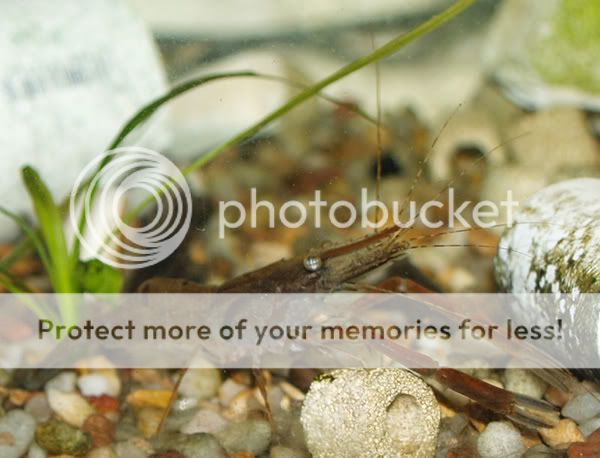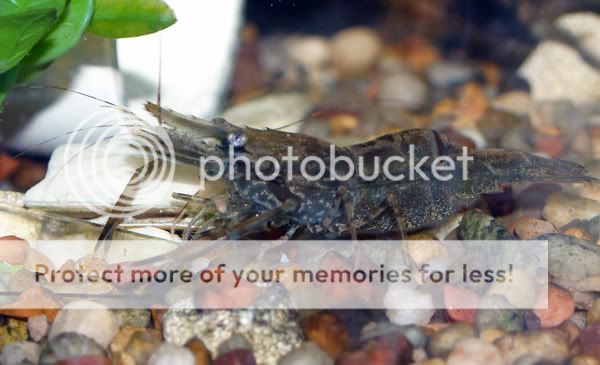I completely agree, they are very interesting. That's why I have over 20 tanks of them now.
Honestly, without knowing the exact species you have, I can't give you specific environmental requirements. Some Macrobrachium species need saltwater environments in order for young to develop through their larval stages. However, if you see a female with eggs, and you can easily distinguish each egg then it is likely that your shrimp will not need any special brackish water or greenwater foods to help the young develop.
Some Macrobrachium species have a more complex male hierarchy. There is one dominate male and one or more sub-dominate males. The alpha male in such species (rosenbergii for instance) releases a hormone that prevents any other male from displaying the coloration of the alpha male. If possible, the alpha male (blue claw) will kill off any other males that display the sub-dominate colors (orange/yellow claw). This is because the sub-dominates continue to grow, and may become larger than the alpha male. If this happens, the sub-dominate male triggers the alpha male hormone and he will take on the existing alpha male. That is how the super large males develop. There are records of rosenbergii males that exceed 15" body length, 2+ feet if you include their claws.
Due to their size and aggression, M. rosenbergii are not commonly (knowingly) sold in the aquarium trade. There have been instances of 'Ghost Shrimp' that turned out to be such. I believe that this happens because of escapees from the shrimp farm industry (the most common source for M. rosenbergii).
Smaller, less aggressive species, such as M. dayanum. Display most of the same hierarchical organization (with the exception of no sub-dominate male group) but are much, much less likely to decimate the population of a communal aquarium. I still recommend keeping species tanks (for breeding purposes), with a population of one alpha male with two or three females. If you have a tank with a large footprint (not just high volume of water), you can support multiple breeding groups. The females will move more freely about the tank, while the males will tend to stick to their established territories. The males will do some digging and rearranging, but nothing to the extent that crayfish do.
Personally I take the females out of their tank when their eggs near hatching and I put them into a different hatchery tank. Twenty four to thirty six hours after I see eggs hatch, I remove the female and put her back in her original tank. This maximizes the number of young that survive. I sell the young once they reach about 1/2" long. This takes about two to three months. Macros grow slower than dwarf shrimp, relative to their proportional size, because they live longer than dwarf shrimp.






